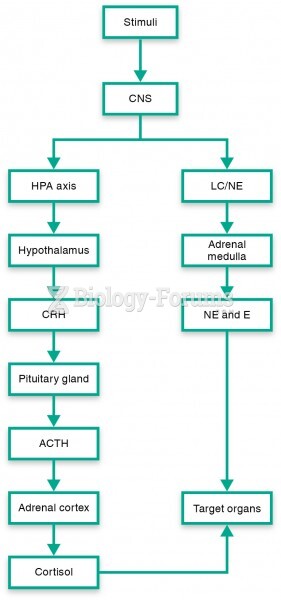Answer to Question 1
Acute stress. Acute stress helps us generate great strength, focus more clearly, increase our speed, and perform at a higher level when a threat is present, but for a very short timeprobably little more than 30-90 seconds. Our bodies don't have the energy reserves to support maximal energy output for much longer than that. Occasionally we can use this source of immediate energy to help us when we do find ourselves, or others, in actual danger, facing potential pain or even death.
Chronic stress. If stressful situations pile up one after another, the body has no chance to recover. This state of continued sympathetic nervous system activation is called chronic stress. Instead of returning to homeostasis, the fight-or-flight response is activated for an extended time. This long-term activation of the stress-response system can disrupt nearly all body processes.
Answer to Question 2
The text provides a scenario published in a magazine that brings to life the role of the fight-or-flight response when our distant ancestor encountered something life threatening, such as a tiger:
Adrenaline floods his system, causing lipid cells to squirt fatty acids into his bloodstream for quick energy. His breathing becomes shallow and rapid, and his heart beats faster, increasing the flow of oxygen to his muscles, enhancing his strength and speed. His blood vessels constrict, minimizing bleeding if he's injured, and his body releases natural coagulants and painkillers. His sweat glands open, leaving his skin slippery and hard for a predator to grasp. His hair stands on end, making him appear larger and more threatening. His pupils dilate, increasing his ability to scan dark jungle terrain. All this happens in less than a second, andzipDad's off and running, far enough ahead of the tiger to ensure that your bloodline, and mine, makes it to the next generation.







